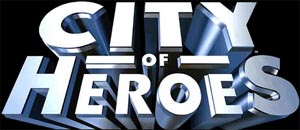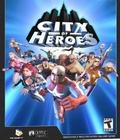City of Heroes still has a good player base even though it (barely) preceded the launch of World of Warcraft. While never really a competitor for Blizzard's MMO juggernaut, CoH cast you as a comic book-style superhero of your own design. It was able to hold its own, making it a mainstay of publisher NCSoft's library. This pattern continued when the game introduced the semi-expansion, City of Villains, a year later and the two-segment expansion, Going Rogue, two years after that.
With the Issue 21 update, NCSoft and Paragon decided to try a free-to-play, microtransaction-based MMO like many other entries on the market. When they started this conversion, they also made massive updates across the board. They put in as much content in the patch as some MMOs would put in an entire expansion, including small changes and gameplay updates. The result may be the game with the largest amount of free content in the genre, though the pay benefits are pretty sweeping.
For those who have enjoyed City of Heroes before, know that your account already qualifies as "premium." Old accounts and most things on them will make the leap, including purchased character slots, earned items, etc. Anything that you cannot access anymore simply grays out.
Players are classified as "free," "premium" or "VIP." Anyone who has ever spent a single penny on the game is premium, while VIP remains $15/month. Free players cannot join Super Groups (guilds), send tells or use global chat channels, use in-game mail, use user-created content from the Architect System, do much with the in-game auction houses, or use crafted items. Premium players gain Super Group access, tells, in-game mail, the ability to play Architect content (but not earn rewards), and can use some Inventions (but not create). They can also purchase most functions — some for 30-day periods, others as a one-time permanent unlock. VIPs get full access to everything stated above, half of the pay items automatically as long as they are subscribed, at least one-third of their subscription fee as points for buying what's left, and are the only players who can unlock the Incarnate system — some of the mightiest powers and about two-thirds of the endgame.
This results in a reasonably good balance of values. Free players who never spend a cent and premium players who never purchase game-extending content can easily get the same amount of gameplay. They have two character slots across all servers (VIPs get 14 for each server), and anyone can purchase more character slots and can go all the way up to level 50. Other than not being able to use an Invention System items, a level-25 character with any combination of primary and secondary powers is going to be functionally as good as another player with the same combination. While paying players will have an easier time optimizing inventions, the game is balanced for using the general items that are available to free players, so you'll have no problem keeping up as one. Unfortunately, the Paragon Market lacks a critical feature: the ability to gift items to other players.
As for the actual gameplay, Paragon Studios has given a few zones the World of Warcraft: Cataclysm treatment, revising them with quests that are more deeply interactive and significant design and graphical upgrades. Unfortunately, by "a few" zones, I mean "three," and you only experience one for about 10 minutes per character.
The revised gameplay for City of Heroes: Freedom starts before you even log in, with a new, nicer character select system — including the ability to check and reserve character names before you start character creation. A handy screen asks you to select the role you want to play in a party, rather than guessing at the differences between, say, "Controller" and "Corruptor." This is doubly important as the game finishes part of what began in Going Rogue, by allowing (almost) every archetype to be playable by both of the game's factions. From there, you get dropped into the highly detailed character creation utilities. There are plenty of purchasable parts and several unlockable ones, but all concepts are perfectly possible with a free account. While the game loads the tutorial, you are treated to a few narrated comic book pages to set up the new experience.
You're in what used to be the second novice zone, where the aliens known as Shivans have crash-landed. A few minutes of being guided by an unidentified radio voice runs you into a weakened hero — and with him, the choice to either become a hero or villain. From there, you go into your first boss battle against a gigantic Shivan with whoever happens to be around, and progress to either Atlas Park in Paragon City (heroes) or Mercy Island (villains). Both quest-filled MMO zones have been revised to focus on a specific, much tighter, much more interactive tutorial that has you interacting with NPCs of varying relevance to the game's lore.
The tutorial is controlled using basic MMO norms. The game gives you travel powers, including the iconic superhero power of flight, at level 4, within an hour of gameplay. While there are many, many quest paths that take you all the way from the end of the tutorial to level 50, you can always smash things, whether in zones or in player-created Architect scenarios. Whenever you change styles, you have a few on-level contacts to speak with and can return to old contacts, who will speed you along to the end of their quest chain. (Each contact typically represents one plotline, with a few having as many as four.) In addition to selecting your powers, your character is upgraded in three areas: unlocks, enhancements, and, for VIP players at the end of the game, Incarnate Powers.
The gameplay peters out at the end, though not for a lack of trying. For free players, once you hit level 50, there are the underoccupied PvP zones (the game has extremely poor PvP balance), other zone events, and two world-based raids: the Rikti War zone's mother ship invasion and the Hamidon. The total is sadly less than it sounds. Asking around, I found players with upwards of 50 level-50 characters. The aforementioned battery of quests and options means that there are enough different ways to get there to keep things interesting.
The third system is reserved exclusively for VIP players and represents the "true" endgame of City of Heroes. The Incarnate System begins with your character being introduced to the Well of the Furies, whose raw power both empowers and controls the setting's biggest names, Statesman and Lord Recluse (along with one known other). Both took the well's power rapidly, causing them to be controlled by it. While a mission shows you the scale of power you could attain, it shunts you down a more controlled path by forcing you to find bits and pieces of the well's power to slowly gain abilities and build up your way to full power.
The game gives you several types of these pieces for doing just about anything, but several pieces are hidden only in the instanced Incarnate Trials, which, at the time of release, are four special scenarios that are akin to raids in recent MMOs, involving modestly complex scenarios, bosses that have tricks up their sleeves, and other hallmarks of the genre's endgames. So far, all four pit you against threats from the alternate universe of Praetoria, including a piece of that warped world's version of the Hamidon. The system's quite nice, and the trials very fun, but it can be difficult to get into raids, even though pick-up groups are the norm; there just aren't that many people who organize them, particularly on weekdays.
All of this is matched against two things that did not get major updates with the switch to free-to-play. The game's graphics are at best comparable to those of the current state of World of Warcraft — more than acceptable but rarely mind-blowing. It doesn't help that some of the latest areas are poorly optimized, able to slow very strong computers to a single-digit frame rate crawl. There were some upgrades to the game's visual effects for some powers, such as Incarnate Judgment powers, which look the part of the screen-clearing piles of mass destruction. The soundscape doesn't hold out quite as well. Basic punches sound muffled, and power sounds can sometimes feel a little weird and disjointed compared to their visuals. The game only has voice work for some of the opening tutorial and uses a minimalist, mostly forgettable soundtrack.
Another technical issue that players may need to watch out for: The game's new launcher allows players to download as they play, starting character building within five minutes of a several-gigabyte download. The game loads its components in a smart order, intent on allowing you to seamlessly download as you go. It succeeds on faster connections, but on a slower connection, regardless of what it says, you want to let most of the download finish before you log in for the first time to avoid major lag spikes and load time issues. This isn't the first time NCSoft has been guilty of this, as Guild Wars had this issue, too.
Ultimately, City of Heroes: Freedom is an old MMO trying to modernize itself through a format switch and a series of upgrades. It isn't all the way there yet, but it still does a lot of things right. MMO fans looking for an alternative to swords, sorcery and spaceships could do a lot worse than trying City of Heroes: Freedom.
Score: 8.3/10
More articles about City Of Heroes











 City of Heroes is a superhero themed MMORPG that offers a host of gameplay features, allowing you to create your own heroes, band together with others to fight evil, build your own secret HQ and strive to become the premiere hero group in the city.
City of Heroes is a superhero themed MMORPG that offers a host of gameplay features, allowing you to create your own heroes, band together with others to fight evil, build your own secret HQ and strive to become the premiere hero group in the city.















